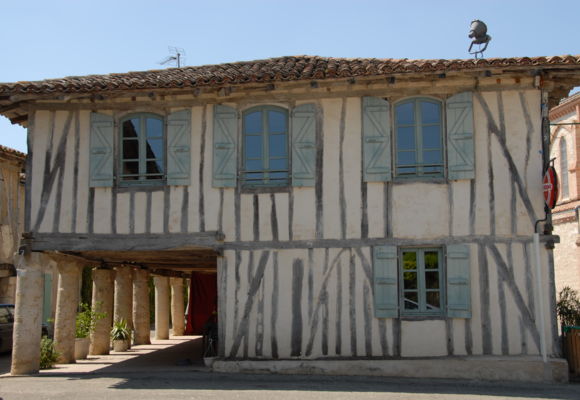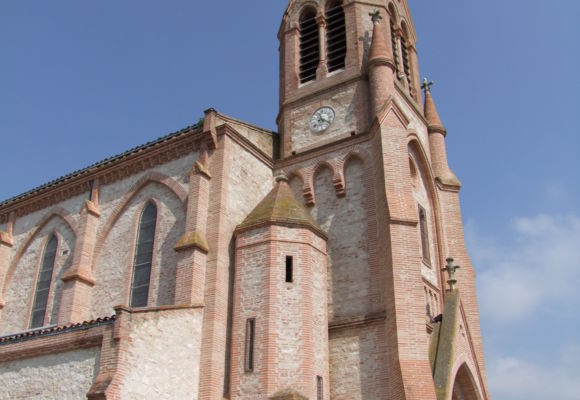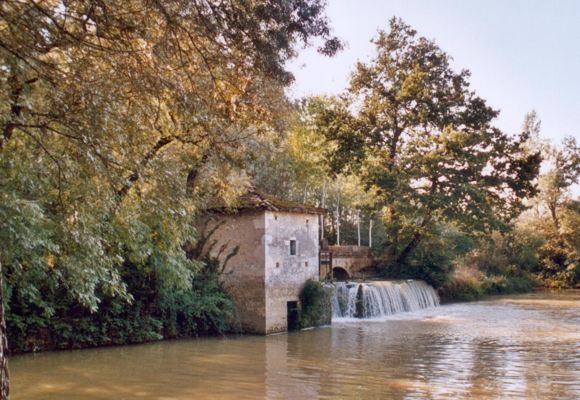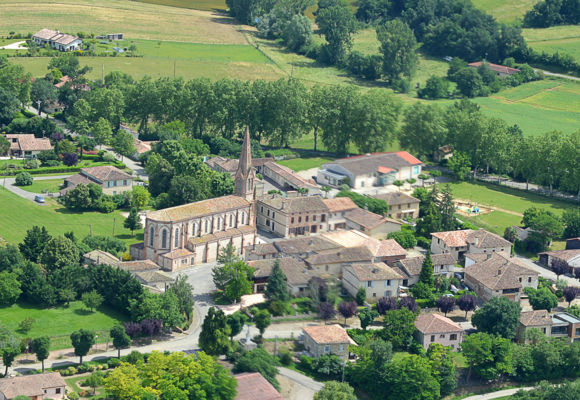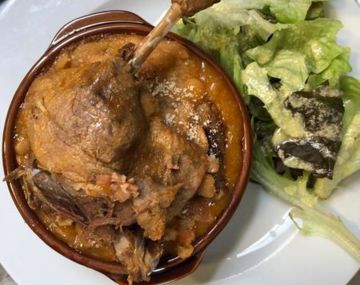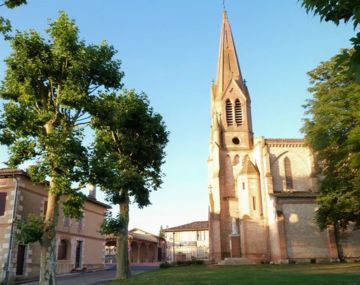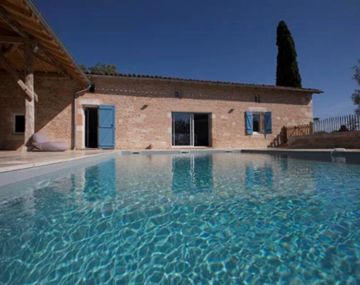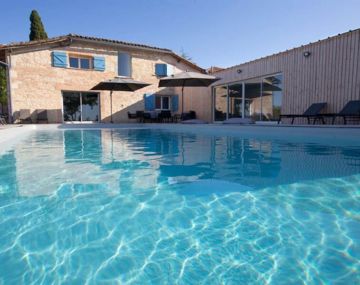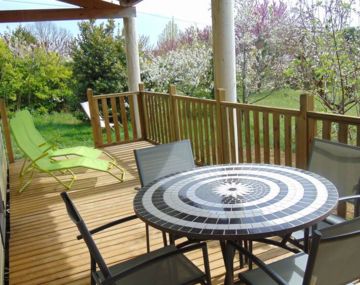Description
Faudoas, situated in the south-west of the Tarn-et-Garonne department, 6 km from the Gers, is perched on the first hillside overlooking the valley at an altitude of 175 m.
The origins of the site date back to late antiquity or the Merovingian period, when a Germanic character settled here. His name was Faldo or Foldo, and his estate Faldoanos, which became Faudoas.
On these lands, a church dedicated to St Laurent was built where the cemetery now stands. Some distance away, a castle was erected on a motte, giving rise to a walled village. The walls, moat and castle have now disappeared, but Faudoas still has some fine timber-framed houses on stone pillars. The current church, built in the 19th century, replaced the castle chapel.
Built from 1898 onwards, the church sits enthroned in the centre of the village. St Laurent’s church was rebuilt on the ruins of the old one, which had been destroyed by fire.
The plan was drawn up by Gabriel Bréteil with a different orientation. Built in the neo-Gothic style, the building comprises a 5-bay nave with a 5-sided heart and 4 side chapels. The bell tower is a square, single-storey tower cushioned by an openwork spire. Two painted terracotta statues date from the 19th century. The paintings in the choir, by Gaillard-Lala, were inspired by those in the Basilica of St Lawrence Outside the Walls in Rome.
In the second half of the 19th century, Faudoas was home to a community of Sisters of the Holy Family of Villefranche, who ran both a workroom and a school and visited the sick.
DON’T MISS
-Houses on stone pillars: The picturesque village has a narrow street lined with covered and corbelled houses resting on stone colonnades.
-Paintings by the artist Gaillard-Lala
The frescoes decorating this church were painted by René Gaillard Lala and his partner Guitard in 1935. His paintings depict religious history from the Old to the New Testament. His paintings can be found on the heart, side walls, vaults and chapels.
– The chapel at Escudès, 3km to the east of the village, is a former place of pilgrimage during rogations. Dedicated to Notre Dame de l’Assomption, it is striking in its simplicity: thick stone and clay walls, a rectangular nave ending in a semi-circular apse on the outside and a canted apse on the inside, and an 18th-century marble altar from Grand Selve Abbey.
– The old water mill
135.7 km long, the Gimone rises on the Lannemezan plateau in the Hautes-Pyrénées and flows into the Garonne upstream of Castelsarrasin.
Spoken languages
- French
Opening
All year round daily
Prices & payment
Free access.
